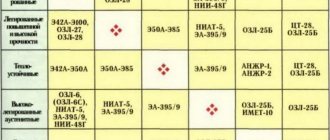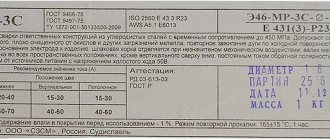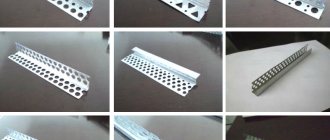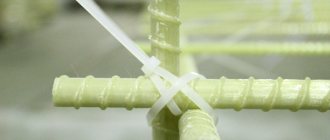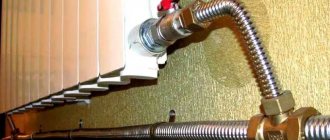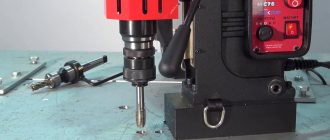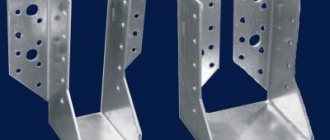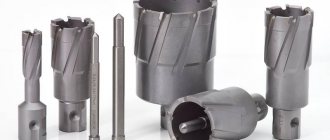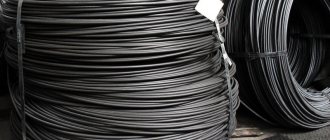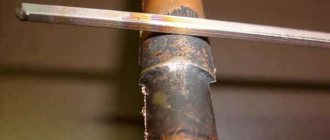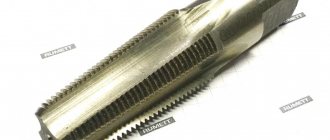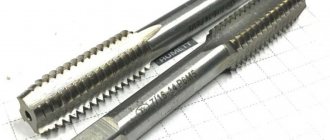In construction, molds are often made to create different products. Most are made from polyurethane foam. It is permissible to pour gypsum and concrete into them, and artificial stone is made into them. To make your own polyurethane, you need to read the recommendations.
Self-production of polyurethane at home
Properties and technical characteristics of the material
The most common material today is polyurethane.
What it is, what advantages it has, you already know. Now let's look at the technical characteristics of this substance. So, the presented material can safely work in an aggressive environment, while its quality properties practically do not change. In addition, the substance works well in a fairly wide temperature range: from -60 to +80 degrees. Sometimes it can be heated to 120°, but this process should not last long, otherwise the material will simply collapse.
The polymer is able to withstand heavy loads and is less susceptible to aging than other substances. It is resistant to wear, moisture, temperature changes, sunlight, salt, and organic solvents. Polyurethane (you already know what it is) is considered a very durable material. Moreover, its elasticity can be programmed during the production process. This material may have different characteristics, which determine the scope of its application. It should be noted that polyurethane can consist of one or more components.
How to use?
Polyurethane elastomer belongs to the category of materials that can be processed without much effort. Polyurethanes do not have the same qualities, and this is intensively practiced in many areas of the national economy. Thus, some materials can be elastic, while others can be rigid and semi-rigid. Processing of polyurethanes is carried out using such methods.
- Extrusion is a method of producing polymer products in which the melted material, which has received the necessary preparation, is forced through a specialized device - an extruder.
- Casting - here the melted mass is injected through pressure into the casting matrix and cooled. This is how polyurethane moldings are made.
- Pressing is a technology for the production of products from thermosets. In this case, solid materials are converted into a liquid viscous state. Then the mass is poured into the mold and, through pressure, it is made more dense. As this product cools down, it gradually acquires the characteristics of a high-strength solid body, for example, a polyurethane beam.
- Pouring method using standard equipment.
Polyurethane blanks are also machined using turning equipment. The part is created by influencing a rotating workpiece with various cutters.
Using such solutions, it is possible to produce reinforced sheets, laminated, porous products. And these are various blocks, building profiles, polyethylene film, slabs, fiber, and so on. PU can be the basis for both painted and transparent products.
Creating polyurethane matrices on your own
Strong and elastic PU is a material popular among craftsmen, from which matrices are created for casting a wide variety of products: decorative stone, sidewalk tiles, paving stones, plaster figurines and other products. PU for mold casting is the main material due to its unique features and availability.
Specifics of the material
Creating matrices from polyurethane at home involves the use of liquid 2-component compositions of different types, and which PU to use depends on the purpose of the casting:
- for creating matrices for lightweight products (for example, toys);
- for creating finishing stone, tiles;
- for forms for heavy, large objects.
Preparation
Before starting work, you need to purchase polyurethane for filling the matrices. Two-component compositions are sold in 2 buckets and must be fluid and liquid when opened.
You also need to buy:
- originals of the products from which the cast will be made;
- scraps of MDF or laminated chipboard and self-tapping screws for formwork;
- specialized lubricant anti-adhesive mixtures;
- a clean container for mixing ingredients;
- device for compounding (attachment for electric drill, mixer);
- silicone based sealant.
Then the formwork is assembled - a rectangular box with a size sufficient to accommodate the required number of models.
Making molds
Primary models are laid on the bottom of the formwork at a distance of at least 1 cm from each other
To prevent the samples from slipping, carefully fix them with sealant. Right before casting, the frame is set to the building level
Inside, the formwork and models are coated with an anti-adhesive mixture, and while it is absorbed, a working composition is made. The components are poured into a clean container in the required ratio (based on the preferred material) and thoroughly mixed until a homogeneous mass is created.
To create molds, polyurethane is poured carefully into one place, allowing the material to expel excess air on its own. Models must be covered with a polymerization mass of 2-2.5 centimeters
You can learn about what can be made from liquid polyurethane from the video below.
Forming methods
The buyer requires a functional product that has certain properties. To achieve this, processing methods are used that are similar to those used with all plastics.
Extrusion
Polyurethane polymer is excellent for injection molding. Under pressure, the heated and softened material is fed into the outlet of the extruder. Hardening occurs in this same zone. As a result, the output is a rod with a given cross-section or a flat sheet. The resulting rolled product is cut or rolled into rolls.
Casting
This method is the most common. It is used to manufacture products with complex geometries: bushings, supports, cuffs, seals, hydraulic elements and bearings. The advantage is easy automation of the process and the ability to produce large batches. For the manufacture of piece parts, the dimensions of which can be up to several tons, casting is used on a bench. The softened mass is poured into the frame, followed by hardening and acquiring a stable shape.
To speed up the process, increased pressure is used in automatic lines. The method differs little from the technology of products made from any plastic. It is often necessary to coat a metal workpiece with polymer. Then softened polyurethane is applied manually or under computer control to the item. As it cools, the layer becomes elastic and creates a protective film.
Pressing
The prepared material (sheet, rod or granular) is fed to the apparatus, where it is shaped using extreme pressure in a limited space. The process may be accompanied by preheating or softening of the substance due to compression. This produces a part with changed properties and a clearly defined geometry. In production, this action is controlled using software.
Fill
To produce artistic or piece goods, the natural casting method is used. Liquid material is placed manually into the prepared mandrel. Under the influence of high temperature or reagents, the device freezes, maintaining the required configuration. In this way you can make a small series of any blanks. More often used for the manufacture of large forms and decorative elements.
Do-it-yourself polyurethane mold production technology
We purchase a package of artificial stone that is ideal for your interior. Usually packages are designed for 1 square meter. You need to lay out half a square of stone on the edge of a chipboard furniture board.
Important: leave gaps between the stones, approximately 1-1.5 cm. Then, using silicone, you need to glue the stone tiles to the chipboard sheet
Then, using silicone, you need to glue the stone tiles to the chipboard sheet.
Using a piece of slab, make a support 2 cm above the edge of the stone. Next, use plumbing silicone to insulate all joints, this is necessary in order to prevent the leakage of liquid polyurethane. To obtain the most even shape, level the surface with the formwork installed on it. For more convenient work, you can place the formwork on the table.
Only after the silicone has hardened can you cover the support and stone with a separator. We give the separator time to crystallize and begin working with injection molded polyurethane.
Next we move on to making the mold. To do this, you need to combine two parts of liquid polyurethane. One part is orange and liquid, and the second is colorless and thicker. We measure out the same amount of liquid with a scale and use a mixer to thoroughly mix them until smooth. Next we pour it into the formwork.
Important: be sure to ensure that the liquid from the canisters is mixed in equal proportions. Fill the mold to the brim and leave to harden for about 24 hours.
Plus ambient temperatures are ideal for working with polymers. Polyurethane does not have a special odor, but it is still not recommended to work with it indoors
Fill the mold to the brim and leave to harden for about 24 hours. Plus ambient temperatures are ideal for working with polymers. Polyurethane does not have a particular odor, but it is still not recommended to work with it indoors.
After about 24 hours, the polyurethane will turn from a jelly-like mass into a stable mold for casting artificial stone.
Next, you need to disassemble the formwork itself, using a utility knife to cut off areas of strong sticking of silicone and polyurethane. After removing the formwork, detach the form from the table. Give the form time to dry; the surface that has not been in contact with air may be slightly damp. Wipe the mold and leave for several hours until the surface is completely dry. Next, you can begin casting the stone.
Types of liquid polyurethane for making molds
Types of polyurethane:
- chilled casting;
- hot casting
Cooled cast polyurethane is the most popular, as it does not require special skills or low-budget equipment. All manipulations with such polyurethane can be carried out within a small production facility or at home.
Hot-molded polyurethane is typically used to produce end-use products that are ready for use. It is also widely used for treating surfaces and joints. Unlike cold-moulded polyurethane, special equipment is required to work with its analogue.
The main analogues of liquid injection molding polyurethane are silicone and formoplast.
Production stages
- Creating a project for the future matrix. It is necessary to accurately recreate the location of the sections;
- Creating a casting structure with walls around the model. Plywood is perfect for these purposes;
- Mix the molding material according to the manufacturer's instructions;
- Pouring material. The material is carefully poured into the corner of the mold so that the solution flows through the prototype, this is necessary to reduce the formation of bubbles.
Mechanical finishing of polyurethanes
Mechanical finishing of polyurethanes includes:
- turning. Cutters designed for polyurethane must have carefully sharpened and sharp barriers. When turning large parts, the depth of the cutter should be 2-3 mm at feed and 0.8-1 mm per revolution. It is necessary to ensure the largest possible gap between the polyurethane and the tool; the chips should come off as a continuous thread.
- grinding. To make the sanded surface smoother, use a slow feed. A large thickness of the removed layer can lead to melting of the surface of the part. The rotation speed of the grinding wheel should be 2255-3255 rpm. Sometimes when sanding you need a coolant, water will do the job just fine. A dust pump collector must be present at the workplace.
- drilling Using low-speed twist drills will be the best solution. Use a backing made of hard material, this is necessary to prevent the polyurethane from breaking at the drill exit. The feed rate is approximately 0.5 mm per revolution.
Part four, technology.
In general, polyurethanes are thermosets, that is, to obtain the final substance it is necessary to carry out a chemical reaction of several components. Due to the incredible diversity, these components can be different, it may seem as if they do not exist (the polyurethane foam polymerizes with air moisture, which activates the second component; while there is no moisture, the reaction does not take place, although both components are mixed), the reaction can be carried out in several stages, of which carry out part of it at the factory.
In some cases, polyurethanes are processed manually and have virtually no requirements for the accuracy of the technology, for example, model polyurethane is supplied in cans, which are mixed in a 1:1 ratio by volume “by eye”, under normal conditions they are drained and “mixed thoroughly”. The resulting result is undoubtedly polyurethane, and its strength, hardness, stability and other physical and mechanical parameters satisfy many applications, for example, the production of molds for figurines.
But unfortunately, with auto parts (and even more so with industrial products), this number does not work: the required dosage accuracy (stoichiometry) is tenths of a percent; when the mixture proportion shifts by a tenth of a percent, the deviations in physical and mechanical parameters can reach tens of percent. For small quantities of components, the role is played by hundredths of grams, which seem to be able to be caught on a pharmacy scale, but it is impossible to pour from glass to glass, much less mix 100%.
Preparing materials for auto parts is a separate matter; some components require heating (but not overheating), mixing, filtering, and so on. Mixing of components is also only hardware and only in a jet; manual mixing is possible, but this is a rather complex multi-stage process, only vaguely reminiscent of YouTube mixing in a glass with a stick. But the result is strikingly different from the garage one - the resulting parts are stronger, more durable and more stable.
The manufacturing technology of polyurethane foams (both soft and hard) is also different: there are household/construction foams that do not require any special tools and methods, and there are industrial foams that are no less complex to produce than elastomers. Theoretically, it is possible to process foams using equipment for processing elastomeric polyurethanes, but in practice it is better not to. We do not currently recycle foam and do not intend to.
A separate class of technologies is the processing of thermoplastic polyurethanes (TPU). Here it is necessary to take into account 3 aspects: firstly, the raw materials for TPU are obtained anyway by the primary reaction of thermoset, secondly, in processing, elastomeric TPU is one of the most capricious thermoplastics, it sharply worsens the mechanical properties when adding secondary material or oscillating the mode, and thirdly, processing Injection molding of massive products is itself quite complex.
There are special compositions with polyurethane for thermoplastic processing, for example, for the production of cable products - a lot of different additives are introduced into them just to simplify processing, but at the same time the mechanical properties, of course, deteriorate. Unscrupulous (or simply inexperienced) processors use inappropriate TPU for the production of our product groups, including boots, bushings, silent blocks, etc., with a predictable result: people try, spit and make an inadequate conclusion that “PU doesn’t suit me.”
Perhaps, as a follow-up, I’ll note that the casting technology of our materials has its limitations. Thus, the reaction is exothermic (proceeds with the release of heat), and the temperature corridor of the reaction is small, therefore, without changing the chemistry (with a drop in physical and mechanical characteristics), it is impossible to fill massive products with great thickness. Layers that are too thin are also bad; at a wall thickness of less than 2 mm, capillary forces begin to play a role and the material may not spill. Since polymerization processes do not occur at room conditions, the maximum physical dimensions are also limited by the available equipment.
Foamed polyurethane production technology
The production of polyurethane foam is nothing more than mixing liquid isocyanate and polyol. In this case, it is necessary to maintain proportion. The result of mixing is a foamy, airy mixture, which, when hardened, forms polyurethane foam. To produce products from polyurethane foam you need:
- Equipment.
- Raw materials.
- Spray gun.
- Lubrication.
When producing polyurethane foam, it is necessary to remember that compliance with all technological standards gives a high-quality product, and their violation leads to defects. Technological standards include:
- Room air temperature.
- Temperature of raw materials.
- Compliance with the standard ratio of raw material components.
- High-quality mixing of components with each other.
The temperature regime plays a key role in this case, because at low temperatures the consumption of raw materials and the quality of polyurethane foam increase. This can also affect the finished products in different ways. The prepared mixture (foam) is filled into the molds. They are filled using the pouring method. Using the pouring method, it is possible to produce thermal insulation boards and shells for pipe insulation. Also, by pouring polyurethane foam into molds, you can produce various decorative elements. Since liquid polyurethane foam is quite “sticky”, for this the mold must be lubricated with special oil or silicone lubricants.
What is needed to make a mold
To make a polyurethane mold of high quality, you need to make a good matrix. You can read how to assemble the matrix here. You will also need the polyurethane itself for filling the molds, a bucket, a kneading stick (or a screwdriver with a mixer), a plastic spatula (I made it from the lid of a plastic bucket), scales and lubricant. I use BC-M wax release agent as a lubricant. You can also take a soap solution, shake it to form foam and use it to treat the matrix, but personally, I like BC-M better.
And of course, you need a room with low humidity and room temperature. Although, to be honest, I filled the molds at only +5 degrees. Polyurethane is not as fluid at this temperature, but I had no other conditions.
Production of polyurethane foam by pouring method
For this method, it is important to have the necessary equipment and the availability of components for the production of polyurethane foam. Just as in the spraying method, the mechanism ensures continuous supply and intensive mixing of the mixture
The only peculiarity is that the reaction mass is not supplied under pressure, but is poured into molds or cavities. In order to obtain a good product, mixtures with a slow foaming time are used. Most often, the filling of elements takes place in several stages, in portions. Because it is not always possible to accurately calculate the filling volume.
Filling with polyurethane foam
Finally
This could have been the end of writing the instructions, but it happens that air constantly escapes in 1-2 places, the balloon bursts, but inflates again. This can happen because either there is a small gap under the stone, or there is a “shell” in the stone itself. In this case, I take a regular needle, insert it into the place where the air is coming from and sharply pull it out. If necessary, you can do it several times. Sometimes it helps, sometimes it doesn’t.
It is better, of course, to use a vacuum chamber when filling to avoid defects, but this is an expensive pleasure. And it’s only suitable for those who make molds for sale. Well, I want to give one piece of advice: if you are going to make yourself a decorative stone and the question arises about the shapes, whether to buy it or make it yourself, then I would recommend buying it, because... When manufactured without a vacuum chamber, there is a high probability of defects. If you plan to produce and need a lot of molds, you can make it yourself, but I assure you, there will be 100% defects.
Read on: how to make a dryer for decorative stone
Peculiarities
In the 40s of the last century in Europe, after lengthy experiments, a German chemist-technologist named Bayer synthesized a material that was distinguished by amazing properties. The polymer found widespread use only 20 years later. It began to be used in many branches of human activity.
The product also contains other components: reagents, emulsifiers, polyesters. And the addition of catalysts and blowing agents completely change the structure of the final product. In terms of the number of variations, polyurethane is ahead of polymers such as PVC, polystyrene and polyethylene.
Polyurethane can be presented in several possible states: liquid with a high degree of viscosity, as soft rubber, soft (foam rubber) and hard (foam). It can also have both high and low elasticity, and can be foamed as polyurethane foam.
The original color of polyurethane is yellow-brown. It is chemically inert, resistant to oils, ultraviolet radiation, as well as aggressive environmental influences, fungi and bacteria. The material has low toxicity.
Polyurethane in any of its manifestations does not lose its characteristics even with temperature fluctuations (ranging from -60 to +80 degrees), so such products serve people in the Far North and in the desert. By the way, compared to the same rubber, polyurethane is not destroyed by ozone.
Its amazing elasticity parameters are impressive - the elongation of polyurethane reaches 650% without significant damage. It also weighs quite little.
And although rubber, plastic and metal are considered its main competitors, in some respects they are inferior to polyurethane.
- Polyurethane is characterized by high coefficients of elasticity, wear resistance, and ages more slowly than rubber. It withstands mechanical stress better, and after any deformation it quickly returns to its original shape.
- Compared to other metals, polyurethane is lightweight and resistant to abrasives. And most importantly, polymer production is much cheaper. Machine parts made of polyurethane create much less noise.
- Polyurethane is superior to plastic when used in heat or cold; it does not crack under impact.
In fairness, it is necessary to say a few words about the weaknesses of polyurethane. The polymer is airtight, and foam parts shrink. And there is also an increase in fragility and hardness when products are left in the cold for a long time. But the biggest disadvantage is the difficulty of recycling polymer products.
Recycling
Resistance to weathering and aggressive environments is a challenge when recycling urethane elastomers. Under natural conditions, they do not decompose for decades. The ability to resist ultraviolet radiation and ozone makes this type of plastic a perpetual polluter of the environment. Therefore, the issue of recycling has become acute.
There are several methods to solve the problem:
- • Incineration. Like all hydrocarbons, the polymer is highly susceptible to high-temperature oxidation. But technological additives contain substances that are hazardous to the environment. During combustion, decay products enter the atmosphere.
- • Physical method. Crushed products have found application in construction, as an additive to concrete and asphalt. Due to this, they acquire a second life.
- • Melting. When heated, the waste is given the required shape and put back into circulation. The disadvantage of this method is that it is difficult to obtain a product with clearly defined characteristics from dissimilar components.
- • Glycolysis is the process of breaking down long molecules at high temperatures in the presence of catalysts. The output is short molecular compounds, which subsequently find service in industry (production of paints, varnishes, additives in asphalt concrete).
- • Chemical method. This is the splitting of chains using reagents. The goal is to obtain a substance suitable for further use.
Production
Polyurethane is a derivative of polyol and isocyanate, products of the petrochemical industry. To achieve certain technical properties, various additives are added to them, that is, when producing polyurethane as a raw material, it is necessary to take into account its further scope. Today it is the most sought after polymer in the world across all major industry segments. Both foreign and domestic materials are represented on the synthetic polymer market.
In the production of products, technological methods such as casting, extrusion, pressing, and pouring are used.
Or how to make a mold from liquid polyurethane yourself
It is no secret that polyurethane forms are widely used in modern construction. This is done due to the ease of use of these matrices in the production of artificial stone, building blocks, and decorative stone. Polyurethane forms have proven themselves to be a quality aid in any construction matter. However, polyurethane form is not a tool exclusively for professional construction. Polyurethane matrices and forms for stone, for example, are widely used in everyday life. Of course, you can buy a polyurethane mold. However, will such a matrix fully meet your requirements and expectations?
This is interesting: Characteristics and use of penoizol
Application of injection molding polyurethane
Two-component injection molding polyurethanes are used for a variety of purposes: from casting gears to making jewelry.
The good performance properties of parts made from such materials allow them to be used in fairly harsh conditions. These parts are chemically resistant, have good hardness and toughness. They may be:
- various shafts, gears, pulleys - due to good strength characteristics and high wear resistance, these parts serve for a long time and with high quality;
- wheels for loaders and carts: such wheels are stronger than rubber ones and can work even with serious tread damage;
- rollers – for example, guide and support rollers for conveyors and conveyor belts;
- toothed transmission belts, tracks and tracks - they are stronger than rubber and last longer;
- sealing elements, shock absorbers, etc. - due to higher strength and wear resistance, replacing rubber parts with polyurethane ones is quite advisable. At the same time, the elasticity of the part remains at the same level;
- couplings, bushings, bearing parts;
- various protective coatings;
- pipelines – excellent chemical resistance together with mechanical strength allows the production of both integral pipeline elements and the protection of pipelines from the outside or inside.
The properties of two-component polyurethanes allow them to be used for the manufacture of paints and varnishes and adhesive compositions. Such varnishes, paints and adhesives are resistant to atmospheric influences and last a long time and are durable.
Liquid elastic two-component polyurethane is also popular for making molds for further castings, for example, for casting from plaster, wax, polyester resins, concrete, etc.
Polyurethanes are also used in medicine - removable dentures are made from them. You can also make various jewelry from polyurethanes.
Even self-leveling floors can be made from polyurethane - such floors are highly resistant to wear and durable.
In some areas, parts made from polyurethane surpass even steel in a number of parameters.
At the same time, the ease of manufacturing such parts allows us to produce both miniature complex parts weighing up to a gram, and massive castings weighing 500 kilograms or more.
In general, four areas of application of two-component polyurethane mixtures can be distinguished:
- rigid and durable parts where polyurethanes replace steel and other metals;
- elastic parts – high elasticity of polymers and their elasticity are in demand here;
- parts resistant to aggressive influences - high resistance of polyurethanes to aggressive substances or abrasive influences;
- parts that absorb mechanical energy due to high internal friction.
In practice, a complex of directions is often used, since several valuable qualities are required from many parts at the same time.
Where is polyurethane used?
Chemical plants produce this material in three forms: solid (sheet, rod, granular), fluid and foam. The first is used for the production of gaskets, protective cuffs, bushings, silent blocks and press seals. This substance has gained great popularity in the production of tubeless tires for sporting goods (roller skates, skateboards), for baby strollers, and technological equipment (trucks, electric cars, warehouse carts, guides for conveyors). These products are presented in a wide range in.
Liquid is used for sealed anti-corrosion coating of a wide variety of structures: concrete floors, roofs, screen surfaces, conveyor belts. It is used as a component in sealants, glue, varnish, and paint. During subsequent processing by vulcanization, complex protective elements are made from it: moldings and cuffs.
Foam is used for insulation of buildings and technological devices. It produces light and elastic soles for sports shoes and light-duty tires. It is not possible to list what is made from polyurethane. This material is widely in demand:
- • In heavy industry, where vibration stands are used, and where the use of conditionally movable units is necessary.
- • In the construction industry. They insulate the surfaces of buildings and create a film that protects against atmospheric influences.
- • In the automotive industry. It is used to make tires, silent blocks, cuffs and gaskets, and protective covers.
- • In medicine. It became widespread because of its neutrality. The products do not emit harmful substances and do not react with medications. Flexibility and high wear resistance allow it to be used in the preparation of prostheses, condoms, implants and coatings for equipment (crutches, beds, handrails, wheelchairs).
- • In the furniture industry. Used in the production of mattresses, garden furniture, fasteners, chairs and tables, elements for decorative finishing.
- • In the manufacture of sports accessories: treadmills, rollers, restraints in exercise machines, sneakers and sneakers, anti-slip coatings, impregnation of covers.
- • In light industry. The material is used to make shoe soles, rivets, bathroom rugs, and orthopedic insoles. Fabric imitating genuine leather is produced.
Areas of application
Two-component injection molding polyurethanes are used for a variety of applications, from casting gears to creating jewelry.
Particularly significant areas of use of this material are the following:
- refrigeration technical equipment (cooling, thermal insulation of commercial refrigeration equipment and household refrigerators, freezers, warehouses and food storage);
- transport refrigeration equipment (cooling and thermal insulation of automobile refrigeration units, isothermal railway cars);
- construction of quickly erected civil and industrial facilities (thermal insulating properties and ability to withstand the load of rigid polyurethanes in the structure of sandwich panels);
- construction and overhaul of residential buildings, private houses, mansions (insulation of external walls, insulation of roof structure elements, window openings, doors, etc.);
- industrial civil construction (external insulation and protection of the roof from moisture using rigid polyurethane spraying);
- pipelines (thermal insulation of oil pipelines, insulation of pipes in low-temperature environments at chemical enterprises by pouring under a pre-installed casing);
- heating networks of cities, towns, and so on (thermal insulation using hard polyurethane of hot water supply pipes during new installation or during major repairs using various technological methods: spraying and pouring);
- electrical and radio engineering (giving wind resistance to various electrical devices, waterproofing contacts with good dielectric characteristics of rigid structural polyurethanes);
- automotive industry (molded elements of car interior design based on thermoplastic, semi-rigid, elastic, integral polyurethanes);
- furniture production (creation of upholstered furniture using foam rubber (elastic polyurethane foam), decorative and cabinet components from hard polyurethane foam, varnishes, coatings, adhesives, etc.);
- textile industry (production of artificial leather, composite fabrics based on polyurethane foam, etc.);
- aviation industry and car construction (products made of elastic polyurethane foam with high fire resistance, manufactured by molding, noise and heat insulation based on specialized types of polyurethane foam);
- mechanical engineering industry (products made from thermoplastic and specialized grades of polyurethane foam).
The properties of 2-component PU make it possible to use them for the production of varnishes, paints, and adhesives. Such paints and varnishes and adhesive compositions are stable to atmospheric influences and hold tightly and for a long time.
Liquid elastic 2-component polyurethane is also in demand for creating molds for castings, for example, for casting concrete, polyester resins, wax, plaster, and so on.
Polyurethanes are also used in medicine - removable dentures are made from them. In addition, you can create all kinds of jewelry from PU.
In certain areas, products made from PU have superiority even over steel in a number of characteristics.
At the same time, the ease of creating these products makes it possible to create both miniature components weighing no more than a gram, and bulky castings weighing 500 kilograms or more.
In total, there are 4 areas for using 2-component PU mixtures:
- strong and rigid products, where PU replaces steel and other alloys;
- elastic products - this requires high plasticity of polymers and their flexibility;
- products resistant to aggression - high stability of PU to aggressive substances or abrasive influences;
- products that absorb mechanical energy through high viscosity.
Technical equipment for spraying polyurethane foam
For spraying, equipment is used that automatically dispenses two components. Moreover, such equipment is equipped with a mixing chamber in which the raw materials are intensively mixed. In spraying equipment, polyurethane foam is fed into the spray gun under pressure
Also, it is important that the equipment for spraying polyurethane foam is equipped with a speed control function. Thus, you can regulate the intensity of application of thermal insulation material to the insulated surface
In order for external insulation work to be carried out year-round, the spraying installation must be equipped with tanks for automatic heating of components. The function of flow-through heating of raw materials is also necessary. Spraying equipment is characterized by low productivity (1-3 kg/min).
The main difference between these two types of equipment (for spraying and pouring) is that the pouring equipment has high productivity rates (from 10 kg/min). Such installations are equipped with a timer that automatically turns off when a certain amount has been filled. This function will help you rationally use raw materials and avoid defects in production. According to some reports, an installation equipped with a timer can save up to 40% of consumed raw materials.
The production of polyurethane foam requires compliance with all safety rules
The manufacturing process from polyurethane foam is a dangerous type of work. After all, raw materials for production can cause irritation to the skin and mucous membranes. When sprayed in the air, a deposit forms from the components, which settles on clothing and nearby cars or other objects and can only be removed mechanically. That is why a person who directly works with spraying or pouring polyurethane foam must wear a protective suit, a respiratory mask and goggles. There are several rules when working with spraying:
- It is prohibited to spray polyurethane foam in a closed room, provided that there are people in unprotected suits in it, as well as in the presence of animals;
- when spraying polyurethane foam, you must make sure that there are no open fires nearby;
- It is prohibited to burn the remaining components and mixtures;
- working personnel must be protected by special clothing, masks and goggles.
It is prohibited to pour the remaining mixed components into sewer drains. All non-recycled polyurethane foam components must be sent to specialized landfills for disposal. If, however, there is a leak of toxic substances at work, the puddle must be sprinkled with sawdust. Well, after the polyurethane foam has completely hardened, it becomes safe for humans and the environment.
The room, which is equipped for pouring polyurethane foam, must have an excellent ventilation system. After all, during the production of polyurethane foam, some toxic elements are released, which, upon contact with air, are broken down into harmless ones. The production itself does not harm the environment if all safety rules are observed.
Chemical properties
Polyurethane does not collapse upon contact with aggressive substances: oils, solvents, petroleum products, salty environments. Unlike rubber, it does not oxidize due to ozone. The material is not susceptible to corrosion when wet. Polyurethane products can be used in high humidity. They are often used for anti-corrosion protection of mechanisms.
But the material cannot be called chemically inert, because it has “enemies”. Polyurethane is destroyed upon contact with aromatic hydrocarbons (this group includes, for example, toluene and benzene). Turpentine and substances containing chlorine or acetone have a negative effect on it. Also, the material is destroyed upon contact with nitric, phosphoric and formic acids.
